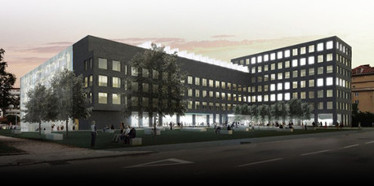
Informatické kolokvium 9.4. Interactive Visualization Techniques for Molecular Structures
Informatické kolokvium 9. 4. 2019, 14:00 posluchárna D2
Prof. Dr. rer. nat. habil. Timo Ropinski, Faculty of Engineering, Computer
Science and Psychology, Ulm University
Interactive Visualization Techniques for Molecular Structures
Abstrakt: Within this talk I will cover our work in the area of molecular
visualization, and will present techniques which have been developed with the
goal to improve the spatial comprehension of complex molecular structures.
First, coverage-based opacity estimation is discussed as a technique to achieve
Depth of Field (DoF) effects when visualizing molecular structures. The proposed
algorithm is an object-based approach which eliminates many of the shortcomings
of state-of-the-art image-based DoF algorithms. Based on observations derived
from a physically-correct reference renderer, coverage-based opacity estimation
exploits semi-transparency to simulate the blur inherent to DoF effects. Second,
I will discuss the integration of diffuse illumination effects into molecular
visualization. While current molecular visualization techniques utilize ambient
occlusion as a global illumination approximation in order to improve spatial
comprehension, interreflections are also known to improve the spatial
comprehension of complex geometric structures. To realize these interreflections
in real-time, an analytic approach is exploited for capturing interreflections
of molecular structures. By exploiting the knowledge of the underlying space
filling representations, the required parameters can be reduced and symbolic
regression can be applied to obtain an analytical expression for
interreflections. I will discuss how to obtain the data required for the
symbolic regression analysis, and how to exploit the analytic solution to
enhance interactive molecular visualizations. Finally, I will show how this
approach can be extended to other molecular representations.